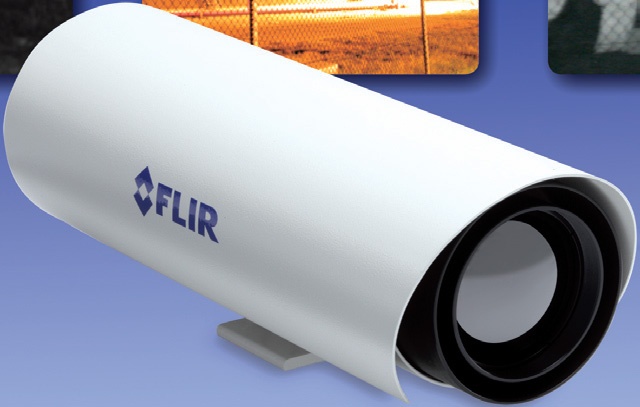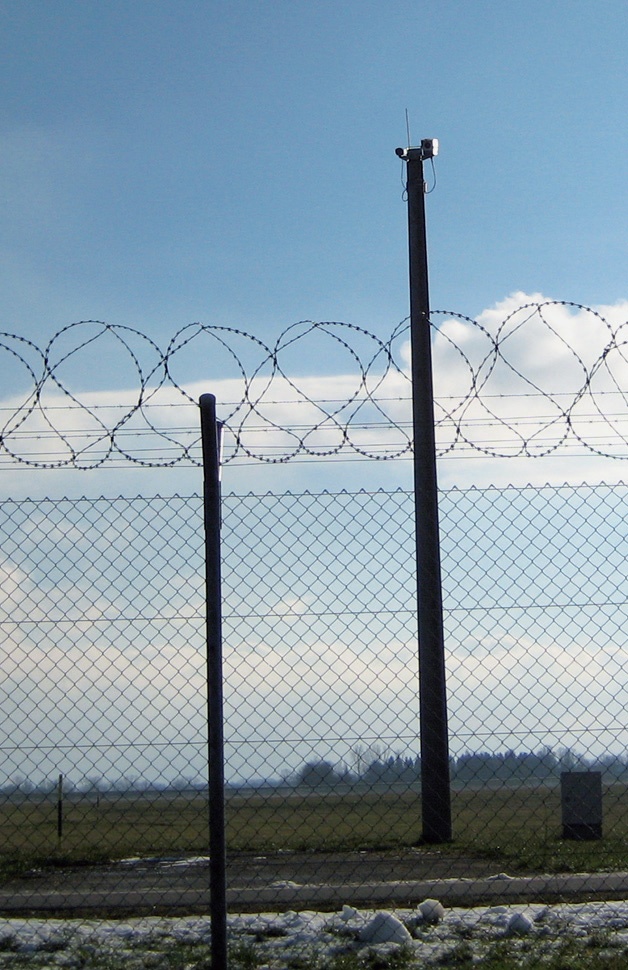FLIR Commercial Vision Systems: thermal imaging cameras protect Munich Airport
FLIR Commercial Vision Systems: thermal imaging cameras protect Munich Airport. Munich Airport, officially named Franz Josef Strauss Airport, is located 28 km northeast of Munich, ...



FLIR Commercial Vision Systems: thermal imaging cameras protect Munich Airport. Munich Airport, officially named Franz Josef Strauss Airport, is located 28 km northeast of Munich, Germany. Munich Airport is the second busiest airport in Germany in terms of passenger traffic (34.5 million in 2008), after Frankfurt International Airport. It is the 7th largest in Europe and ranks number 28 on the list of busiest airports worldwide. Within just a few years, Munich Airport has become one of the major European aviation hubs. It is a driving force for jobs and growth within the region. And Munich Airport is preparing to expand even further. In order to increase the capacity from 90 to 120 flight movements per hour, a third runway is planned.
In 2008, for the fourth year in a row, Munich Airport has been named the winner of the ‚Best Airport in Europe‘ award in an international survey of 8.2 million passengers worldwide. The annual Airport Survey conducted by Skytrax, an independent, London-based aviation market research firm, is the largest international customer survey of airport quality standards. Passengers also ranked Munich number 5 in the worldwide rankings behind Asian hubs Hong Kong International Airport, Singapore Changi, Seoul Incheon and Kuala Lumpur airports in the Skytrax World Airport Awards 2008.
Safety at the Airport
Being among the world’s top 5 airports means that international passengers rank Munich Airport extremely high with regard to items like waiting time before checkin and immigration, restaurant staff, retail assistants… Something which is probably not considered by passengers that are passing through Munich airport and filling out a survey, is safety. Travelers consider it to be obvious that an airport is a site where all necessary safety and security precautions are taken.
‚Passenger that are passing through Munich airport do not only need to feel safe, they have to be safe.‘, explains Mr. Edlbauer, Product Manager Video Surveillance at Munich Airport. ‚In order to achieve this we do not only have the necessary security personnel, such as walking patrols, in place. We also have installed a complete CCTV network. All together more than 1,000 cameras are monitoring critical areas of the airport. Cameras are not only installed inside the airport. We are also monitoring activities that are taking place on the outside perimeter of the airport. A giant area, since Munich Airport covers a surface of 1,560 hectares.‘
‚If people try to gain unauthorized access, we want to be warned as early as possible. Therefore we are monitoring the outside perimeter of the entire airport. Although there is a fence going around it, we want to see what is happening as well. If someone wants to climb over or cut the fence, we need to know this immediately so that we can take the necessary actions to intercept the intruder immediately.‘
Surveillance of the Perimeter Without Hindering Air Traffic
Seeing what is happening with CCTV cameras is not a problem most of the time during daytime. But during the night or in bad weather conditions it becomes a different story. CCTV cameras need light to produce an image. ‚The outside fences of the airport run parallel with the runways. The only points where we have light are some gates which can be used for emergency services if necessary. On both sides, this outside perimeter is a straight line of about 6 km each.‘
Installing lights to illuminate 12 km of fence line is an expensive exercise. Costly civil works need to be carried out. Powering and maintaining the lights can even be more expensive. And at an airport, even other factors come into play. ‚The fence runs parallel with the runway, so installing too much light might confuse pilots. Therefore this is not an option. In order to see what is happening around the fence during the night, we had light amplification installed.‘
Light Amplification
Light amplification, also referred to as I2 technology, amplifies small amounts of visible light thousands of times so that objects can be seen at night. These systems scan an area and amplify the available ambient light to produce an image. Light amplification does require a certain level of ambient light, but even starlight can produce an image on a cloudless night.
A high-end image intensified camera can produce outstanding images on a clear moonlit night. Because the system requires at least a minimum level of ambient light, conditions such as heavy overcast can limit its effectiveness. Similarly, too much light may overwhelm the system and reduce its effectiveness. ‚And that is exactly what happened here at Munich Airport.‘, Mr. Edlbauer continues. ‚When airplanes were landing or taking- off, their landing lights were disturbing the light amplification. When the light amplification system was ready for replacement, we decided to explore the market for other technologies as well. This is how we discovered thermal imaging cameras.‘
Thermal Imaging Cameras
Thermal imaging needs no light whatsoever to operate. It produces a clear image in the darkest of nights. In practically all weather conditions. ‚We got in contact with Mr. Horvath from Dekom Security, a German distributor of FLIR Systems thermal imaging cameras for security applications, who demonstrated the system. The solution for Munich Airport was fairly simple.‘, explains Mr. Horvath.
‚The thermal imaging cameras needed to guard a straight 6 km line. One on each side of the airport. We opted for the SR-100. This FLIR Systems thermal imaging camera has excellent range performance and is able to detect a man-sized target at a distance of about 1.6 km. The FLIR Systems SR-100 presented itself as a good solution for our problem. It presents an excellent combination of range performance, image quality and price. In order to make sure that no threat goes undetected we decided to install FLIR Systems SR-100 thermal imaging cameras at each side of the airport‘,continues Mr. Edlbauer.
‚The SR-100 thermal imaging cameras have been installed, together with a CCTV camera, on a pan/tilt. This way we can look wherever we want. We seamlessly switch between de daylight and thermal camera. During daylight we are using the CCTV cameras. In low light conditions and in total darkness we switch to the SR-100 thermal imaging camera.”
Thermal Imaging Cameras Let No Threat Go Undetected
Although they are mainly used in darkness, thermal imaging cameras are very useful during daylight as well. Potential intruders that are trying to hide in shadows are seamlessly detected by thermal imaging cameras. Thermal contrast is also extremely difficult to mask. People that are trying to camouflage themselves become clearly visible on a thermal image.
‚The images produced by the SR-100 are going over fiber optic cable to the control room. We can control the pan/tilt and look at the images on every screen or on the video wall. If a threat is detected we can take immediate action.‘
Just like at any major airport, assuring the safety of passengers, planes and their crew, airport staff and any other person that comes to the airport is a priority at Munich Airport. FLIR Systems thermal imaging cameras help to make sure that no threat goes undetected.
Contact:
FLIR Commercial Vision Systems B.V.,
Breda, Netherlands
Tel.: +31 76579 4194
Fax: +31 76579 4199
flir@flir.com
www.flir.com
most read

Assa Abloy's battery-powered Aperio KL100 secures lockers
Boost workplace security and operational flexibility by securing more than just doors.

Security management, building security & perimeter protection: the winners of category E at the GIT SECURITY AWARD 2026
GIT SECURITY AWARD 2026: Security management, building security & perimeter protection - an overview of the most innovative solutions

GIT SECURITY AWARD 2026 - The winners have been announced!
GIT SECURITY AWARD 2026: The best safety and security solutions of the year - now an overview of all winners

Machine & plant safety: The winners of category A at the GIT SECURITY AWARD 2026
GIT SECURITY AWARD 2026: Machine & plant safety - an overview of the most innovative solutions

Integrated and Futureproof: Traka’s Next Chapter
Interview with Stefni Oliver on Traka’s Vision for the Future








